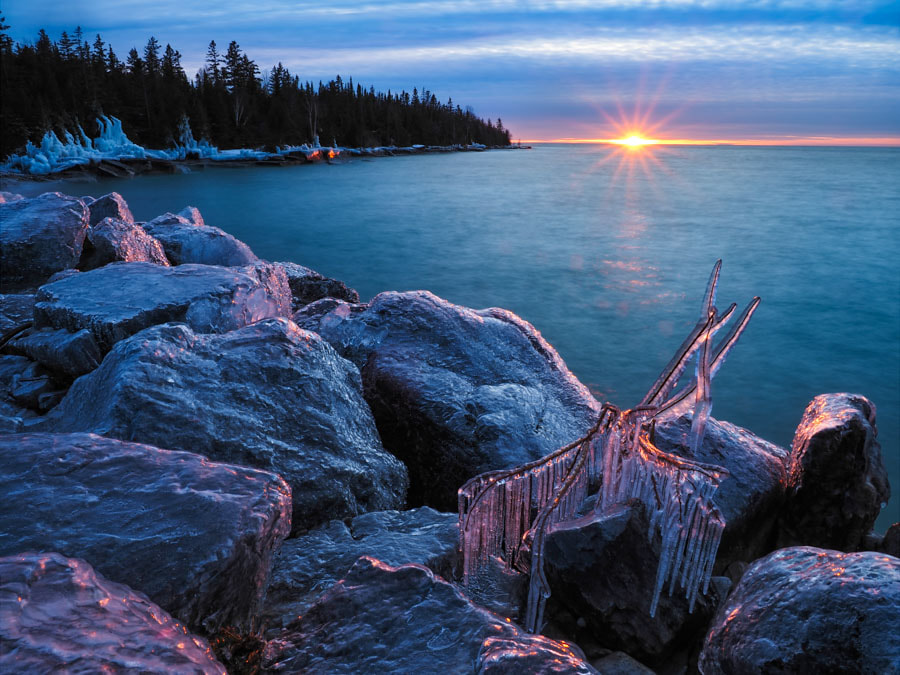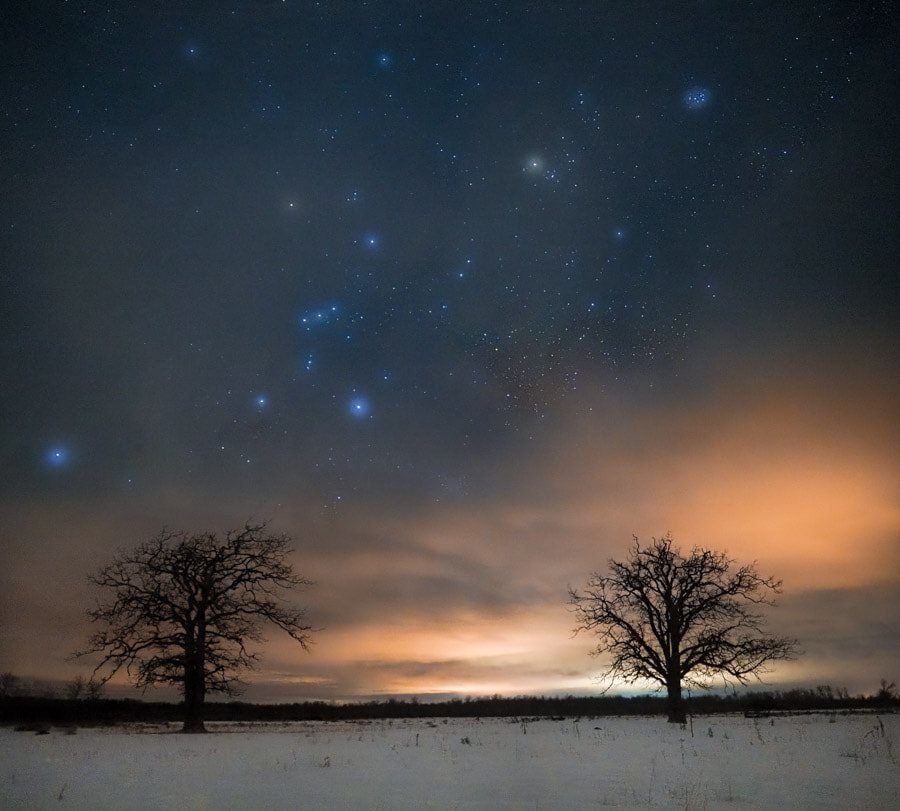Light, Powerful and my New Favourite!Disclosure: I am an Olympus Visionary and as such, receive compensation from Olympus America. However, no compensation was paid for this review. I endorse their products because I truly believe in the quality of their gear. The Olympus line-up of cameras has grown again with the release of the E-M1 Mark III, and I am very excited about this new model. Its predecessor, the Mark II came out back in late 2016, so this is a long-awaited addition. Before I delve into any details about this camera I must state that this is not a formal review (I'll leave that to the websites that make that their business), but rather a first impressions write-up. And as usual, I'm going to explore the features of the Mark III from the perspective of a nature/landscape photographer. So let's have a look... If you removed the nameplate in the bottom right corner there really isn't much of a difference between the Mark III and the Mark II, at least physically. In the hand, they feel identical and there's a really good reason for that. The dimensions are identical! (As a quick aside, that means that the HLD-9 battery grip also fits the new Mark III) Of course, a lot of people will also make a comparison to the E-M1X, the Mark III's bigger brother, released in 2019. Here is a quick size and weight comparison for the three siblings.
There are a few differences however, and they can be seen at the top and rear of the E-M1 Mark III. Most of these changes have been inherited from the E-M1X, and they are welcome ones. The mode dial now contains 4 custom settings like the 1X, compared to the 3 of the Mark II, as well as the addition of Bulb (B) mode. With B mode added to the dial, Live Composite, Live Bulb, and Live Time are now easier to access and configure. There is also a dedicated ISO button. This is a great addition, one that I use all the time on the 1X, although it is in a different position. It took awhile to retrain my muscle memory but since I never use Auto ISO, it is a convenient button to have. On the rear of the camera the Mark III inherited another welcome feature of the 1X - the multi-selector or joystick. I absolutely love this feature. I use it to quickly select focus points or negotiate menu settings. Now, speaking of the menu, this button has migrated to the top right and I have to admit that I'm not keen on that location. I like having all of the most-used buttons and dials within easy access of my right hand, but given the fact that the camera has run out of real estate on the right side it needed to go somewhere. I would like to see Olympus add the option of customizing the other buttons to act as the menu. A Comparison Normally for a write-up like this I would spend my time comparing the new camera (the E-M1 Mark III) to its direct antecedent (the Mark II). But I'm not going to do a lot of that. I think it makes more sense to draw comparisons to its newer sibling, the E-M1X. Olympus considers both of these cameras to be 'flagship' models for the professional photographer and they certainly handle that designation admirably. As mentioned, the Mark III now has the multi-selector, an additional custom setting on the mode dial and a dedicated ISO button. But most of the similarities are on the inside, along with some additions that the 1X does not have. The Mark III maintains its 20.4 MP Live MOS sensor, but the real advancement comes with its new TruePic™ IX image processor. This engine allows for features that Mark II owners have been dreaming of, in a much smaller package than the 1X. Hand-held High Res Shooting The Olympus E-M1 Mark III now comes with 50MP hand-held high res shooting capability, delivering high resolution images without the need for a tripod. As someone who really doesn't like to use tripods for my regular landscape shooting, this is fantastic! The tripod high res setting is still available, which provides an 80MP ultra-high-resolution image and can suppress subject movement such as rippling water or moving leaves. LiveND When the 1X arrived on the scene, it was the LiveND feature that impressed me the most; a slow shutter speed effect without the need for an actual ND filter. Since that time I have used it countless times and absolutely love it. And now, the Mark III has it as well.
LiveND is a great creative feature that I most often use to soften the movement of waves and waterfalls. But that is just the beginning. It can add a nice soft motion blur to all sorts of things - clouds, flowers blowing in a field, people moving, and intentional camera movement. Custom AF Target Mode The Mark III maintains the 121-point all cross-type On-chip Phase Detection AF sensor. The 25-point group that was introduced with the 1X has also been included. Utilizing the joystick makes selecting your active focus point much faster and easier than the D-pad, although that method still works. The AF areas can even be moved while engaged in sequential shooting for moving subjects. You can create your own customized targeting pads and assign them to any of your custom mode settings (C1, C2, etc.). This can be accessed using the Gear Menu - A2. Custom Menu Options Custom menus have now been added to the Mark III. First introduced with the 1X you can now create your own set of custom menus. A 'star' icon has been added to the bottom of the main menu. In order to populate that menu you press the record button on any of the other menu items and you can add that option to any of 5 different custom menus. A Stellar Innovation! The feature that I am most excited about in the E-M1 Mark III is Starry Sky AF. If you are not an astro-landscape photographer, you may not think this is a big deal, but believe me - it's out of this world! One of the most challenging aspects of night sky shooting is the difficulty of focusing on the stars. Regular auto-focus doesn't work in dark conditions, which means you need to rely on manual focusing. Even with the manual focus assist features on previous OMD models there have been numerous times where I thought I had nailed the focus while out in the field, only to discover that, once I viewed them on my computer monitor, the focus was a bit soft. Starry Sky AF eliminates that issue. And it works beautifully! Here's what Olympus says about the feature, "Starry Sky AF, which is new for the OM-D E-M1 Mark III, is a feature that will revolutionize the world of astrophotography. In the past, photographers have traditionally relied on manual focusing. A new algorithm was developed to offer accurate focusing even on the tiniest stars shining in the night sky, enabling ultra-high-precision autofocusing that has been admired even among professional astrophotographers. There are two modes in Starry Sky AF. Speed Priority mode (default setting), which prioritizes focusing speed and complete AF operations in a short period of time. Thanks to the powerful image stabilization, this feature makes handheld astrophotography possible using a wide angle lens. Accuracy Priority uses a fine-tuned focus scan and is effective for shooting specific stars with telephoto lenses."
Shoot for the Stars! So here is how the process works. Once you've composed your shot and enabled Starry Sky AF, you press the AEL/AFL button. The message, "Starry Sky AF is Running" appears on the LCD. The camera then begins the process of trying to lock focus on the stars. I typically use the 3x3 or 5x5 target point and ensure that it is positioned in an area of the frame where the stars are brightest. Acquiring focus usually takes about 5-10 seconds when set to the Accuracy Priority Mode. Once focus is achieved, the target point (green rectangle) will blink once, an audible beep will be heard, and a green circle will flash briefly. Then you are ready to shoot. In the short time that I have had the Mark III I have been out several times to shoot the night sky under a variety of conditions, including thin cloud cover. Starry Sky AF was able to achieve focus each time (sometimes it takes more than one attempt), and maintain that focus throughout the session. I want to repeat what a big deal this is. Manual focusing at night is tough. Even with magnification and focus peaking it can be difficult to ensure perfectly sharp stars. It is incredibly disappointing to travel to a dark sky area, spend hours shooting, head home, upload those images and discover that your stars are slightly out of focus. To now know for certain that the stars will be sharp - every time - is a really big deal! Thanks, Olympus! In Brief It's worth mentioning the other features/improvements to the E-M1 Mark III and also worth noting that most of these are inherited from the E-M1X.
Final Words and Images When the E-M1X came out, I was impressed. It had LiveND, improved auto-focus and tracking, better IBIS, hand-held high res, and more. However, it did receive some criticism over its larger form factor. Olympus earned a great reputation for packing incredible features into a small, light, rugged body without sacrificing image quality. The E-M1 Mark III returns to that tradition and delivers in all those areas. I still love shooting with the E-M1X, but when it comes to travel I know which camera will be in my bag. The camera body has a suggested retail price of $1799.99 USD or $2399.99 CAD. A couple of different of camera/lens bundles are also being offered.
19 Comments
2/12/2020 07:25:12 am
The most complete review I've read so far. It's not a significant leap from the E-M1II, but the improvements are very welcome.
Reply
2/12/2020 09:20:25 am
Great review and wery nice pictures, i have already tested the camera and its looking wery promising.
Reply
Peter Baumgarten
2/12/2020 10:09:27 am
Thanks, Bill. Now that the Milky Way is on the cusp of returning to my latitude I can't wait to get out and do some more astro shooting.
Reply
Deb Mcpats
2/12/2020 05:23:13 pm
Lovely night shots. Thanks for the review. Any idea when the 150-400 lens with the built in 1.25 converter will be available for purchase?
Reply
2/12/2020 06:48:38 pm
I'm so glad to see you review this camera. I was very excited to see some of the new features they've added, specifically the ND filter and Star focusing. I'm not one to jump on the newest models of gear right away, but this one has me intrigued. Beautiful images, Peter!
Reply
John Parker
2/15/2020 12:50:06 pm
Hi Peter and thanks for the review particularly on the Starry Sky AF.
Reply
2/18/2020 11:37:04 am
Awesome review, I will be trading in my EM-1 MKii for the MKiii to be more in line with my E-M1X
Reply
Jack M
3/6/2020 05:32:43 pm
Any chance the Starry Sky AF will be included in a firmware update for the M1X? I've only had that camera for a few months and loving it, but not ready to switch to the MkIII.
Reply
Christina
3/7/2020 06:19:21 pm
Hi Peter .... thanks for your great review on the m111 .... I am very excited to be picking mine up today ! My question is .....I’m heading to Whitehorse, Canada next month, with the hope of seeing the Northern Lights .... having no experience with this ... or snow, as I live in Australia... I am wondering if I need to drag my tripod along, or with the IS available with this camera ... would I get away with hand held ? I will be taking 7-14, 12-100, 40-150 all PRO and 2x converter .. your thoughts would be much appreciated...
Reply
3/8/2020 09:50:50 am
I was thinking of upgrading to the E-M5 mkiii but after reading your review I think I'll go for the E-M1 mkiii .
Reply
George Howard
4/13/2020 09:23:08 am
Thanks for the update. I would love to see a good review on using the old 4/3s glass on this body. Hope they offer a combo deal with the 4/3s adapter.
Reply
2/22/2022 05:25:44 am
This is a very informative—edifying article to all. Thanks a lot! Continue to post!
Reply
4/21/2023 02:48:05 am
PLASTIC DEALER is an Nationwide Supplier of house and manufacturer dealing in superior quality of polymers and chemicals. Over the years, we have gained strong foothold in the market due to high quality, competitive prices and time lined delivery schedules of our range.
Reply
4/21/2023 03:54:28 am
This Aparajita is an evergreen plant belonging to the Fabaceae species, which mainly grows in the form of a creeper. This plant looks very beautiful with its attractive flowers and it is also more famous for this. Let us tell you that this plant is known as Shankhpushpi in many regions and in English it is also known as Asian pigeonwings, bluebellvine, cordofan pea and Darwin pea. To get complete information about this plant, you read our article carefully. Know the flowers, leaves of this plant and their medicinal properties and other features, etc.
Reply
4/25/2023 08:31:57 am
A digital marketing agency is a company that specializes in providing a range of online marketing services to businesses and organizations. These services may include search engine optimization (SEO), social media marketing, email marketing, content marketing, pay-per-click advertising (PPC), and other forms of digital advertising.
Reply
Leave a Reply. |
AuthorPeter Baumgarten is a professional photographer and educator. He is also an Olympus Visionary and NiSi Official Photographer. Categories
All
|





































